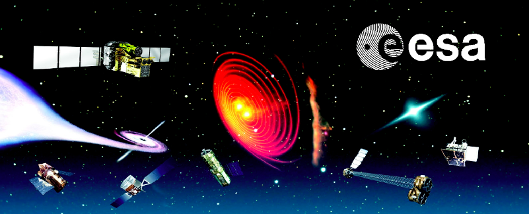
INTEGRAL Workshop

SRON Netherlands Institute for Space Research and the Anton Pannekoek Institute for Astronomy of the University of Amsterdam have organised the 11th INTEGRAL Conference. The meeting focused on the astrophysics of highly energetic phenomena that are observed with INTEGRAL, taking into account advanced modelling and observational constraints from all wavelengths (and other cosmic messengers). The programme provided a broad perspective of the findings of INTEGRAL in synergy with other space observatories (XMM-Newton, Chandra, NuStar, Swift, ASTROSAT, Hitomi, Fermi, etc.) and ground-based facilities (LOFAR, H.E.S.S., Veritas, MAGIC, etc.). It addressed key open questions in the field and novel ideas to resolve them.

- X-ray binaries (involving black holes, neutron stars, and white dwarfs)
- Isolated neutron stars (gamma-ray pulsars, magnetars)
- Nucleosynthesis (SNe, Novae, SNRs, ISM) and gamma-ray lines, including 511 keV)
- Galactic diffuse continuum emission (including Galactic Ridge)
- Massive black holes in AGNs (blazars, and the nucleus of the Milky Way)
- Sky surveys, source populations and unidentified gamma-ray sources
- Cosmic background radiation
- Gamma-ray bursts
- Progress in data processing and analysis
- Future instruments and missions

During this week, and in particular on 17 October 2012, we celebrated the 10th anniversary of the launch of the INTEGRAL mission.
The main goal of this workshop was to present and to discuss (via invited and contributed talks and posters) latest results obtained in the field of high-energy astrophysics using the International Gamma-Ray Astrophysics Laboratory INTEGRAL, as well as results from observations from other ground- and space-based high-energy observatories and from associated multi-wavelength campaigns.
Contributions to the workshop covered the following scientific topics: - X-ray binaries (IGR sources, black holes, neutron stars, white dwarfs) - Isolated neutron stars (gamma-ray pulsars, magnetars) - Nucleo-synthesis (SNe, Novae, SNRs, ISM) and gamma-ray lines (511 keV) - Galactic diffuse continuum emission (including Galactic Ridge) - Massive black holes in AGNs, elliptical galaxies, nucleus of the Galaxy - Sky surveys, source populations and unidentified gamma-ray sources - Cosmic background radiation - Gamma-ray bursts - Coordinated observations with other ground- and space-based observatories - Science data processing and analysis (posters only) - Future instruments and missions (posters only)

Overview
The main goal of this workshop is to present and to discuss (via invited and contributed talks and posters) latest results obtained in the field of high energy astrophysics using the International Gamma-Ray Astrophysics Laboratory INTEGRAL, as well as results from related observations from other ground- and space-based high energy observatories.
Topics
- X-ray binaries (IGR sources, black holes, neutron stars, white dwarfs)
- Isolated neutron stars (gamma-ray pulsars, magnetars)
- Nucleosynthesis (SNe and SNRs), gamma-ray lines, diffuse line and continuum emission
- Massive black holes in AGNs, elliptical galaxies, nucleus of the Galaxy
- Surveys, source populations and unidentified sources
- Cosmic background radiation
- Gamma-ray bursts
- Coordinated observations with other ground- and space-based observatories
- Science data processing and analysis (posters only)
- Future instruments and missions (posters only)

The workshop is part of a biannual sequence of workshops for the presentation and discussion of high energy astrophysical results of observations with the INTEGRAL satellite as well as from other space missions and ground based observatories.
The theme of this workshop is the physics and characteristics of compact object such as white dwarfs, neutron stars, and black holes. The phenomena covered are gamma-ray bursts, X-ray bursts, micro-quasar activity, transients of any kind, pulsars, and surveys for the source classification.
In addition there is a number of invited highlight talks that give overviews of other high energy astrophysics fields. For the topics not directly covered by the main theme there are poster sessions that include the nuclear line emission, diffuse emission, and instrument descriptions. The last session is on future gamma-ray missions.
